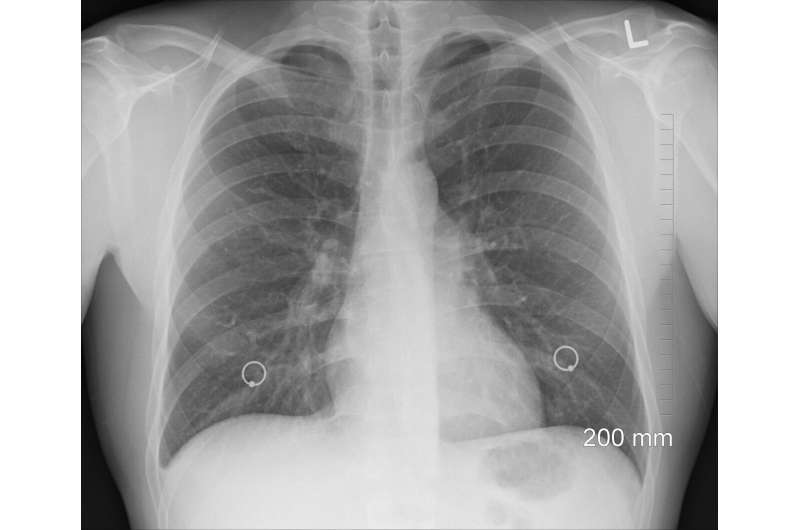This article has been reviewed according to Science X's editorial process and policies. Editors have highlighted the following attributes while ensuring the content's credibility:
fact-checked
proofread
Research shows pathway to developing predictive biomarkers for immune checkpoint inhibitors

A study presented today at the International Association for the Study of Lung Cancer 2024 World Conference on Lung Cancer demonstrates a promising pathway toward developing predictive biomarkers for immune checkpoint inhibitors.
In non-small cell lung cancer, immune checkpoint inhibitors offer significant promise, yet their efficacy is limited to a subset of patients. Identifying reliable predictive biomarkers is crucial for optimizing treatment responses.
Research led by Dr. Arutha Kulasinghe's team from The University of Queensland and Prof. Ken O'Byrne at the Princess Alexandra Hospital, in collaboration with Dr. Ettai Markovits from Nucleai and the team at Akoya Biosciences, has revealed that the intricate profiles of the tumor microenvironment are key to predicting which patients are likely to benefit from these therapies.
Kulasinghe and their colleagues analyzed a retrospective cohort of NSCLC tissue samples from 45 patients treated with immune checkpoint inhibitors. Their group used advanced multiplexed immunofluorescence (mIF) staining combined with deep learning-based analysis, and classified cells into 15 distinct types and further categorized them using unsupervised clustering techniques.
"By mapping over 1,000 spatial features within tumor and TME regions, we compared characteristics between responders and non-responders to identify predictive patterns," O'Byrne reported.
Their team identified 43 unique cell subsets, which were primarily differentiated by their metabolic and activation states. Key proteins linked to oxidative phosphorylation and metabolic pathways, such as CS, SDHA, ATPA5, HK1, GLUT1, and LDHA, were differentially expressed.
A notable finding was the association between metabolically active lymphocytes—characterized by elevated PD-1, MHC class I and II, and CD44 levels—and their presence in tumor infiltrating lymphocytes and tertiary lymphoid structures. Tumor cells were classified into three metabolic states: OXPHOS+, OXPHOS-, and PPP+, with PPP+ cells showing increased proliferation, CD44 positivity, and a higher resistance to PD-1 blockade. Tumors with over 40% PPP+ cells were associated with poorer response to PD-1 inhibitors and reduced overall survival.
"This research reveals complex relationships between metabolic states, immune cell functionality, and responses to immunotherapy, and offers a promising pathway toward developing predictive biomarkers for ICIs," Kulasinghe said.
The findings highlight the potential for enhancing patient selection and treatment outcomes through detailed metabolic profiling of the tumor microenvironment, he reported.


















